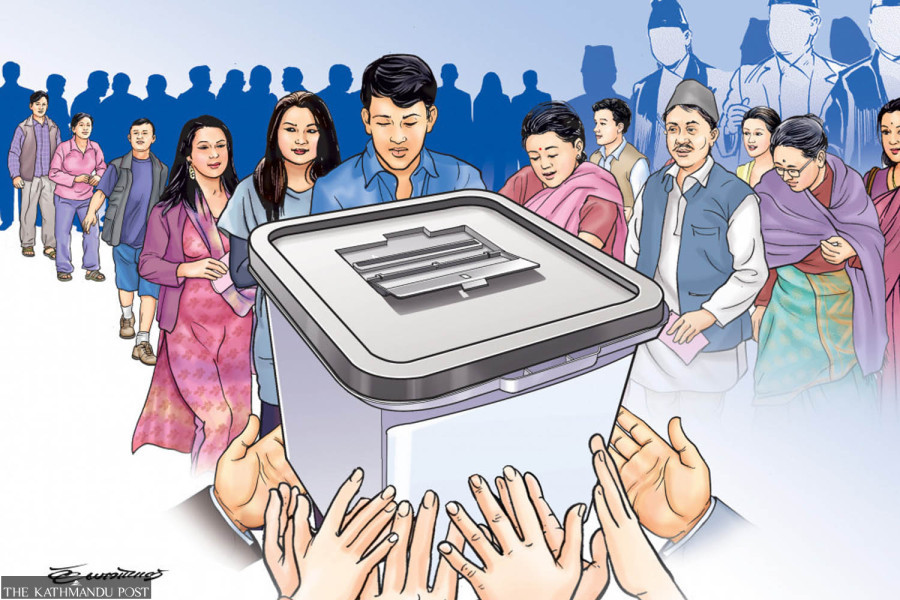Editorial
Too early or too late?
Political parties have embarked on election campaigns. People won’t be easily fooled.
So the electioneering has begun. The Nepali Congress, the largest party in the federal Parliament, has kicked off its election odyssey by deploying rank and file to all 77 districts under the “Congress in Communities Nationwide Campaign”. The party also intends to boost its ranks by 700,000 members within a year. The CPN-UML, the second largest party, recently started its own “Mission Grassroots” in order to strengthen the party’s ideological and organisational bases, again with the ultimate goal of winning an absolute majority in the next elections. Likewise, the recently concluded central committee meeting of the CPN (Maoist Centre), the third largest party, also ended with a commitment to reach out to the grassroots in order to “reinvigorate” the party and make it election-worthy. But it is not just these established parties who are at it. Even the Rastriya Swatantra Party, the new kid on the block that created an uproar in the bypolls earlier this year, is expanding its nationwide organisation as it prepares to field candidates in all seven provinces and each of the 753 local units in the next electoral cycle. All these parties seem to be in a rush. The only problem is that the next set of elections are over four years away.
Before the promulgation of the new constitution in 2015, the government in Kathmandu used to change every six months to a year. The new constitution incorporated certain provisions to give the country a semblance of stability, for instance by stipulating that an elected government would not face a motion of no-confidence for the first two years of its election. So as the government cannot be easily removed now, perhaps the parties are thinking ahead. This is not bad in its own right. Rather than making a beeline to their constituencies ahead of elections, they will now have to work with them for much longer. This will give political parties a chance to deeply understand local issues and adapt accordingly. Yet these parties don’t appear much interested in hearing about people’s woes. And in the case of the established ones, they seem to be in an existential crisis following the astounding showing of the Rastriya Swatantra Party in the 2023 bypolls. They believe that if they don’t get their houses in order—and soon—they will be trounced in the next polls.
Their electoral campaigns smack of desperation. People have repeatedly tried and tested these parties and the same-old bunch of leaders who have helmed these outfits for decades. The electorate is looking for a change, certainly in the faces at the top, but also in the functioning of the political parties. The way the Congress and the UML are struggling to retain their party members—much less add new ones—suggests even the rank and file don’t trust their leaders. Make no mistake. The people whose hopes these parties have time and again dashed will not be easily persuaded. Only if they are willing to prove through action their commitment to change—for example by voting in new leaders, making themselves more inclusive and clarifying their ideological stand—will all their campaigning bear fruit. Otherwise even four years will prove to be too little to save the sinking ships.




 16.2°C Kathmandu
16.2°C Kathmandu














